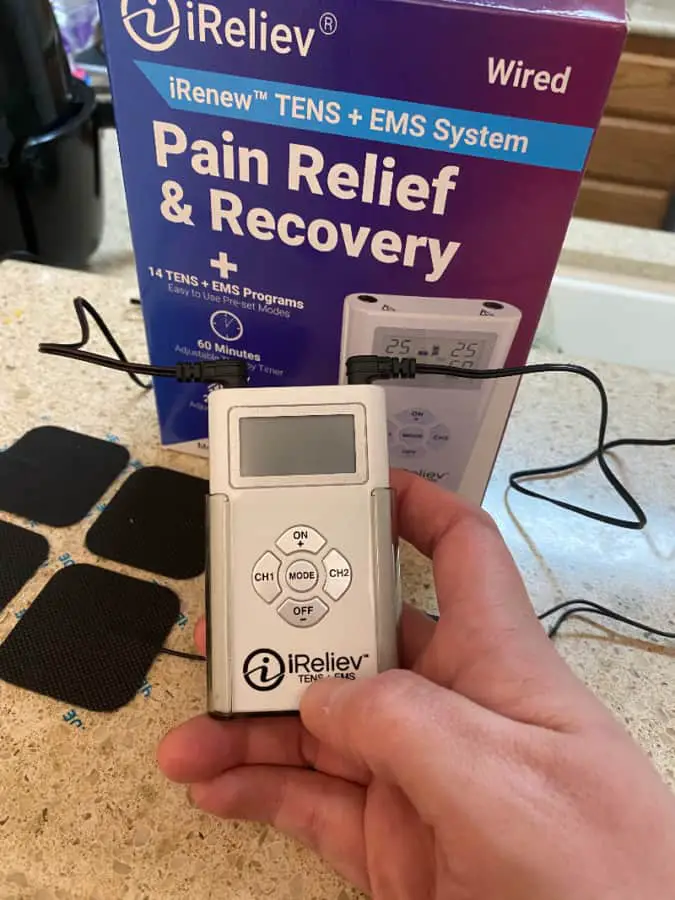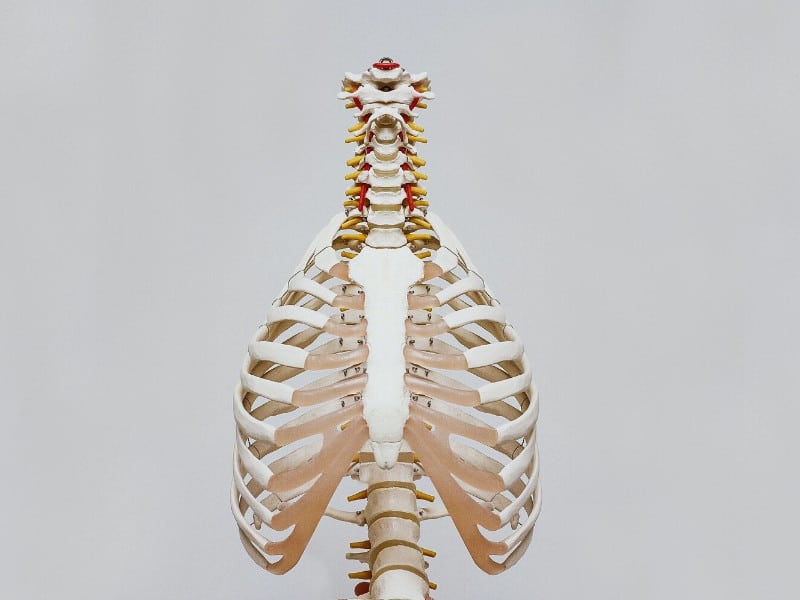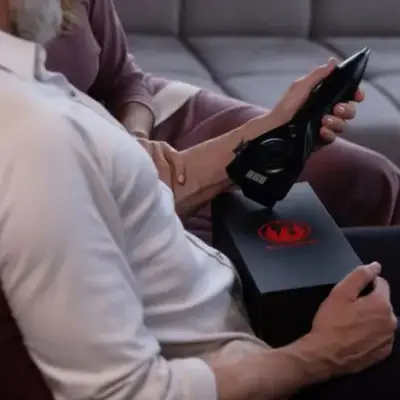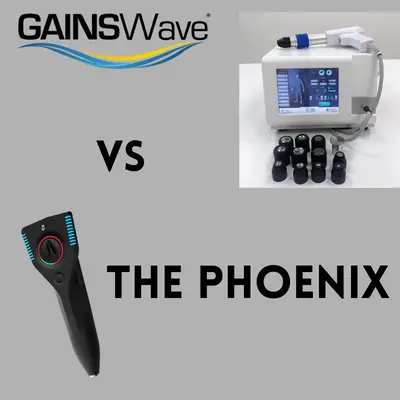Rib injuries and fractures are often difficult to treat because they can’t be placed in a cast like a regular broken bone. However, rib injuries can be extremely painful and can make simple tasks like breathing and twisting practically unbearable.
So, can you use a TENS unit on ribs? Yes! Using a TENS unit on your ribs can help to reduce the pain associated with uncomplicated rib fractures. That means a TENS unit might not be all that effective if you have a severely shattered or jagged rib. You might want to use smaller electrodes to better target your rib pain.
There are very few circumstances where it would make sense to use a TENS unit on your ribs. So, we’re going to be reviewing common causes of rib pain, how rib injuries are typically treated, and how the TENS unit can help relieve rib pain.
TENS Unit Placement for Rib Pain
Considering the ribs are a smaller region of the body and your fracture might be limited to a small area, you might want to use smaller electrodes to better target the affected area. You can also attach them to the front of your body, back of your body, or even both.

Start with a 30-minute session, but be aware that you might not see long-lasting effects until you’ve completed a few sessions with your TENS unit. Begin at a lower frequency and pulse length and slowly work your way up as you become more comfortable.
Keep an eye on your rib injury or fracture and alert a doctor if the injury doesn’t appear to be healing. You might require more intensive medical intervention if that’s the case.
Need to upgrade your TENS Unit?

You do not need to spend hundreds of dollars to get a quality TENS unit and iReliev gives you a ton of value for the price being paid. Best part is they are based in Dallas, Texas and have phenomenal customer service FREE shipping and delivery in less than 5 days.Get yours today on the iReliev website by clicking here
Causes of Rib Pain
Rib pain isn’t all that common, but it can be caused by all sorts of things. You might experience rib pain after a traumatic fall or injury, but you also might accidentally injure your ribs by simply twisting your body too hard in one direction.
Most rib pain is caused by rib fractures. However, it’s also possible to strain the muscles between your ribs or experience swelling of the cartilage between your ribs and your breastbone. Let’s go over each of these conditions briefly.
Rib Fracture
Rib fractures are the same thing as broken ribs, which is where one or more ribs are cracked. Since you can’t necessarily put your ribs in a cast, you’re somewhat limited in treatment avenues that you can pursue.
Fractured ribs are usually caused by traumatic injuries or falls and usually aren’t entirely fractured (just cracked). A rib fracture can make it painful to take deep breaths, bend over, or even twist your body.
Intercostal Muscle Strain
When you experience an intercostal muscle strain, you’re pulling or tearing the muscle that lies between the ribs. This condition is usually caused by sudden movements like twisting or lifting heavy objects.
Intercostal muscle strains tend to be extremely painful and make normal movements difficult. You might even experience pain when breathing, especially when you’re attempting to take a deep breath.
Costochondritis
Costochondritis occurs when the cartilage connecting your ribs and your breastbone becomes inflamed and swollen. There are plenty of causes for this condition, including simple arthritis, heavy lifting, or even mild injuries.
This condition is quite painful, especially because there are no treatment methods other than waiting it out. Given the lack of treatment methods, there’s no way of knowing just how long this condition will affect you.
Note: The pain associated with costochondritis is quite similar to that of a heart attack. If you feel a sudden pain in the breastbone that doesn’t seem to be going away, it’s best that you see a medical professional to rule out a heart attack.
Typical Rib Pain Treatment Methods
Rib pain is difficult to treat because your ribs aren’t as easy to splint or compress as your arms, legs, hands, and feet might be. For the most part, you just have to power through the pain and wait for your condition to begin to heal.
In the meantime, you can use some of the more common treatment methods to ease your rib pain. Let’s go over a few of them right now and discuss how effective they might be.
Pain Relieving Medication
Though your rib pain might seem severe to you, there’s a very small chance that you’ll actually be prescribed some heavy-duty pain medications. For the most part, you can help to ease your pain by using NSAIDs, also known as non-steroidal anti-inflammatories, such as Advil or Aleve.
While NSAIDs won’t necessarily improve the healing process, they might help to relieve the pain and allow you to somewhat return to your normal everyday life. Make sure you’re sticking to the manufacturer’s guidelines, as taking a higher dosage doesn’t necessarily mean less pain.
Compression Wraps
Before we get into compression wraps, we first want to make it clear that this isn’t the best method of treating rib pain or conditions in recent years. In fact, it appears as if compression wraps might actually cause lung issues like pneumonia.
Compression wraps are designed to compress the ribs and limit their movement. This can help to reduce the pain that comes along with taking deep breaths, especially breathing patterns that force your ribs or rib muscles to move.
Though no longer the go-to method for treating rib pain, compression wraps are essentially the only way to splint the ribs.
Cold Packs
As always, sometimes, the best method for treating pain or inflammation is by using cold packs. By using a cold pack on your ribs, you can help to reduce the pain associated with your condition and even limit the swelling.
TENS Unit & Rib Use
In a 2002 study, patients with minor rib fractures underwent experimental testing related to rib pain relief. That means study participants had mild rib fractures that were likely simply cracked, not entirely fractured, or jagged.
There were several different treatment methods tested, including the use of a TENS unit, NSAIDs, a combination of the two, and a placebo group. The study ultimately determined that the TENS unit was much more effective at reducing rib pain than the NSAIDs or the placebo groups.
Guidelines
Given the lack of studies related to using TENS units on the ribs, not much is currently known about the positive effects that this treatment method might have. Based on the conditions we went over earlier, each could feasibly be treated with a TENS unit.
However, there is one thing you need to consider.
Most important is that studies related to rib fractures and TENS treatment involve minor rib fractures. You’d want to check with your doctor first to see if it’s okay to use a TENS unit to treat a more severe fracture.
Also, keep in mind that a TENS unit won’t speed up recovery. Its sole purpose is to relieve pain, reduce stiffness, and possibly improve your mobility.
Conclusion
Rib injuries and fractures are perhaps some of the most difficult injuries to treat. Since the ribs can’t be splinted or compressed to speed up the recovery process, the actual time it takes to recover from these injuries can seem endless and extremely painful.
The good news is, there are several treatment methods available to you that can help with pain reduction. You can obviously take over-the-counter pain medications or use cold packs, but using a TENS unit on your ribs can be even more effective.





4 responses to “Can I Use A TENS Unit on My Ribcage?”
[…] units aren’t recommended for everyone. Here are a few groups of people that shouldn’t use a TENS unit without consulting a doctor […]
[…] you have any doubts about placement, consult the TENS unit manual to see if it offers advice, or talk with a medical […]
[…] you can see the process of using a TENS unit is easy and intuitive. In general you want to place the patches or electrodes either directly […]
[…] TENS unit is an electronic device that may be able to help relieve pain. It’s particularly useful for those […]